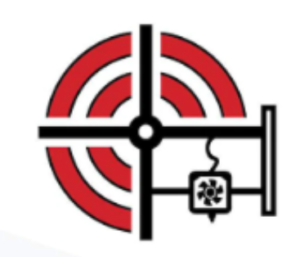Chinese pharmaceutical company Triastek gets U.S. green light to test once-a-day anticoagulant pill made with 3D printing. This new kind of blood thinner pill is designed to stay in the stomach longer and is one step closer to reaching patients with atrial fibrillation (AFib), a condition that affects the heart’s rhythm and raises the risk of stroke.
On February 27, 2025, the U.S. Food and Drug Administration (FDA) gave Investigational New Drug (IND) clearance to Triastek to begin clinical trials in the U.S. for a drug called T20G. This means the company can now test the pill in people to evaluate how safe and effective it is.
T20G had already received clearance from Chinese regulators in January 2024, authorizing the start of clinical trials. However, this new U.S. approval marks a big step toward potential global use.
Why this matters
AFib is one of the most common heart rhythm problems in the world. When the heart beats irregularly, it can cause blood to pool and form clots, which can then lead to a stroke. According to global estimates, between 30 to 100 million people are living with AFib, and that number is only growing as populations age.
For many patients, the main line of defense is anticoagulation therapy or blood thinners. These medications reduce the chance of stroke by helping prevent blood clots.
In recent years, a newer class of blood thinners called NOACs (non-vitamin K antagonist oral anticoagulants) have become the go-to treatment, replacing older medications like warfarin. NOACs are safer, easier to manage, and don’t require regular blood tests.
T20G is part of this NOAC class, but it’s different because it’s 3D printed to release the drug slowly in the stomach over an entire day. That means patients only have to take it once a day instead of the twice-a-day schedule required for some other blood thinners.
How the 3D printed pill works
Although we have seen plenty of soft, gummy-style 3D printed pills pop up in recent years. Triastek’s T20G is a solid, traditional-looking tablet designed for patients to swallow once a day, just like most oral medications. What makes it different is how the inside of the pill is designed and made.
Triastek uses a special 3D printing process developed in-house called Melt Extrusion Deposition with Micro-Injection Molding (MED&MIM). This technology builds the pill using melted pharmaceutical materials, allowing engineers to design complex internal structures that are not possible with standard pill-making techniques.
At the heart of T20G is a patented internal architecture known as 3DμS-GR, short for 3D Microstructure for Gastric Retention. According to Triastek, this “extended gastric retention” means the pill sits in the upper part of the digestive system, where the medicine is best absorbed. It also ensures a steady release, so the medication works all day.
This location is key. The upper digestive tract is where many medications are best absorbed. By staying there longer and dissolving gradually, T20G delivers its medicine in a steady, controlled way over 24 hours and could lead to potentially fewer side effects that are usually tied to “uneven dosing.”
What happens next?
Now that the FDA has cleared T20G for clinical trials, Triastek will begin testing the drug in the U.S. The trials will assess how the pill is absorbed, how safe it is, and whether it works better than existing options.
While the company hasn’t announced an official timeline for when the drug might hit the market, getting IND approval is considered one of the hardest first steps in drug development. In fact, if all goes well and the trials are successful, T20G could potentially reach the U.S. market before the end of the decade.
One reason it might move faster is that T20G is being developed through the FDA’s 505(b)(2) pathway, which is used when a company creates a new version of an existing, already-approved drug. In this case, the active ingredient remains the same, but Triastek is changing the delivery method into a once-a-day, 3D printed pill. Basically, the original version of the drug, which T20G is based on, is approved and sold by another company. What Triastek is changing is how the body receives it, not the drug molecule itself.
This regulatory path allows Triastek to reference existing safety and efficacy data from the original drug, so they don’t have to start completely from scratch. According to FDA data, drugs developed this way can sometimes reach the market in just 3 to 5 years, depending on trial results and FDA feedback.
This pill is aimed at people with AFib and venous thromboembolism (VTE), where blood clots pose a major threat. These are typically older adults or people with high blood pressure, diabetes, heart failure, or other cardiovascular issues.
Triastek says it plans to move quickly with U.S. testing, adding that approval from both China and the U.S. shows “global momentum behind its work.”
“With T20G receiving IND clearance in both China and the U.S., Triastek has achieved a new milestone in the field of gastric retention drug delivery,” says Feihuang Deng, VP of Technology at Triastek. “Building on this dual regulatory recognition, we will accelerate the development of T20G to provide high-quality pharmaceutical products to patients worldwide.”
The FDA already approved the first 3D printed pill back in 2015, and although around a dozen companies worldwide are actively developing 3D printed pharmaceuticals, Triastek is quickly moving beyond the niche novelty to address major health conditions like AFib. Of course, T20G won’t be available tomorrow, but if clinical trials go well, it could join the list of next-generation therapies that hope to make treatment for patients a lot simpler.
Subscribe to Our Email Newsletter
Stay up-to-date on all the latest news from the 3D printing industry and receive information and offers from third party vendors.






